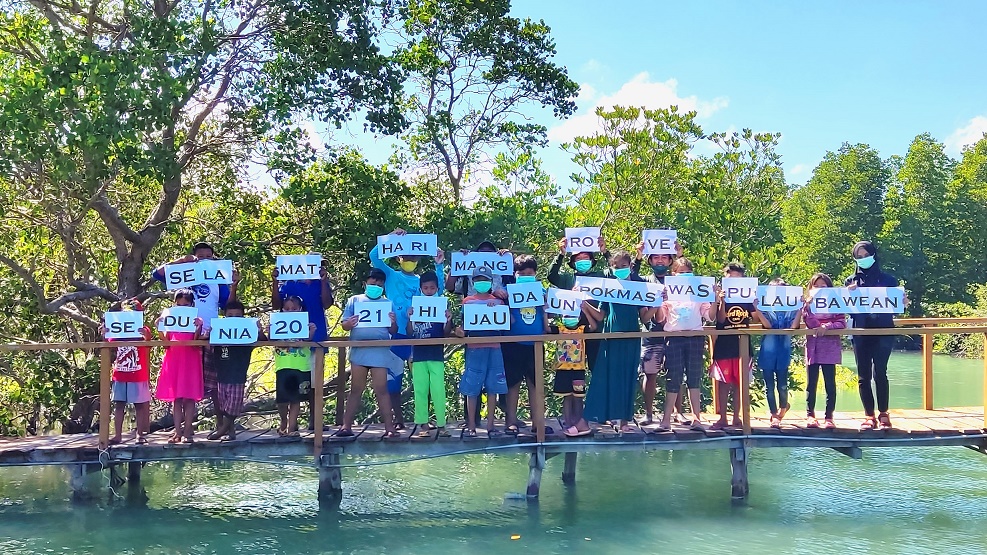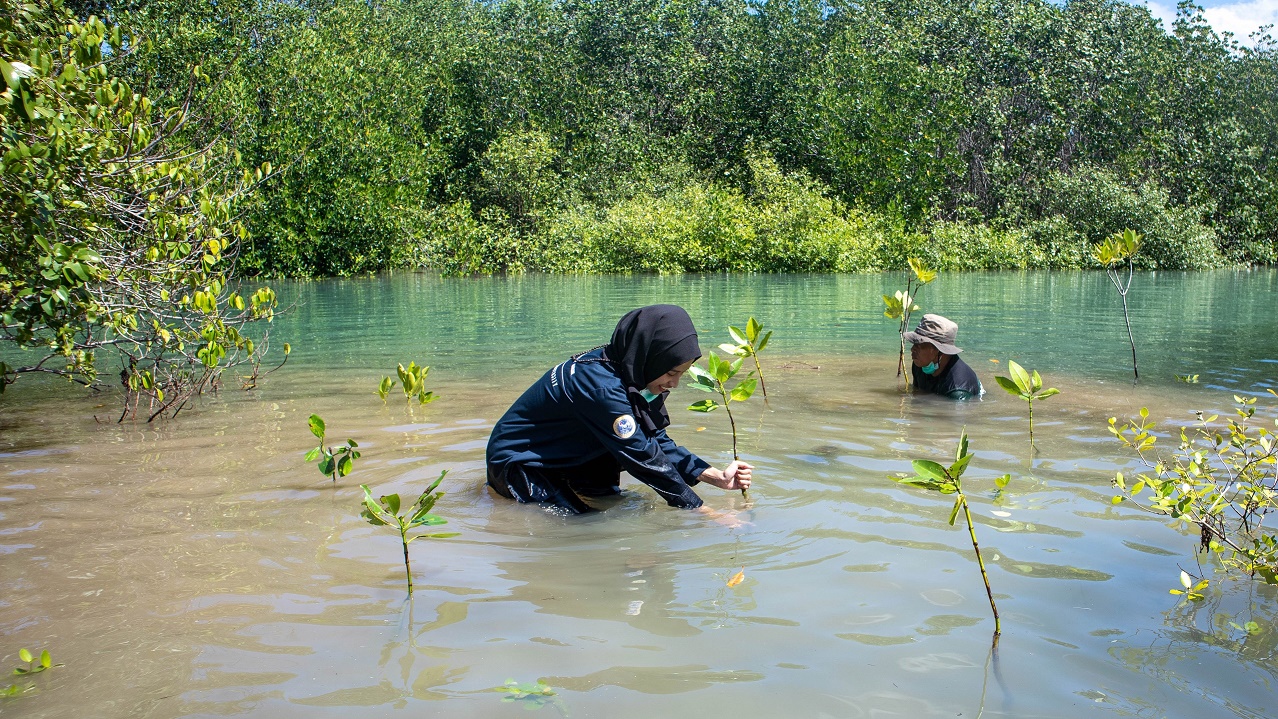UNAIR NEWS – On the northernmost island of East Java, Bawean Island, a Faculty of Fisheries and Marine Sciences Universitas Airlangga (FPK UNAIR) student, Anisa Muberra, in commemoration of World Mangrove Day on Monday, July 26, 2021, took part in planting mangroves in the conservation area of Hijau Daun Monitoring Community Group (Pokmaswas), Daun Village, Sangkapura Sub-district, Bawean Island, Gresik Regency, East Java. With village officials, the head of vanname shrimp cultivation in Daun Village, and the community, Anisa planted 200 mangrove seedlings around the downstream river of the conservation area at 09.00 – 11.00 WIB.
The species of mangrove seedlings planted were Rhizopora mucronata and Rhizopora sp. They were six months old and 60 cm tall. The student of the Aquaculture Study Program, Rara said that it is necessary to pay attention to environmental factors, types of mangroves, and their natural habitats in planting seeds. The stems should not be yellow; the height of the seedlings is at least 50 cm, aged 3-4 months old, and the number of leaves is at least six pieces.
“Before they can live independently in the planting area, they must be protected by inserting them into hollow bamboo. The goal is to prevent them from being swept away by the waves,” she explained.

According to the student from Purworejo, Central Java, planting mangrove seeds can be used as a fence that prevents coastal abrasion (sea waves eroding the coast, ed) in Bawean Island. When the seeds adapt, she continued, the roots will grow and become stronger and later can be used as a barrier and breakwater.
Mangrove ecosystem for the survival of aquatic biota is very vital. Mangroves serve as feeding grounds, nursery grounds, and spawning grounds.
“Furthermore, mangroves play a major role in controlling climate change because the ability of mangrove forests to store carbon (CO) is higher than forests on land,” she explained.
Rara, who is currently undergoing her Field Work Practice (PKL), continues to learn and is determined to introduce and develop environmentally friendly cultivation while still paying attention to environmental sustainability. (*)
Author: Dimar Herfano
Editor: Feri Fenoria





